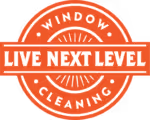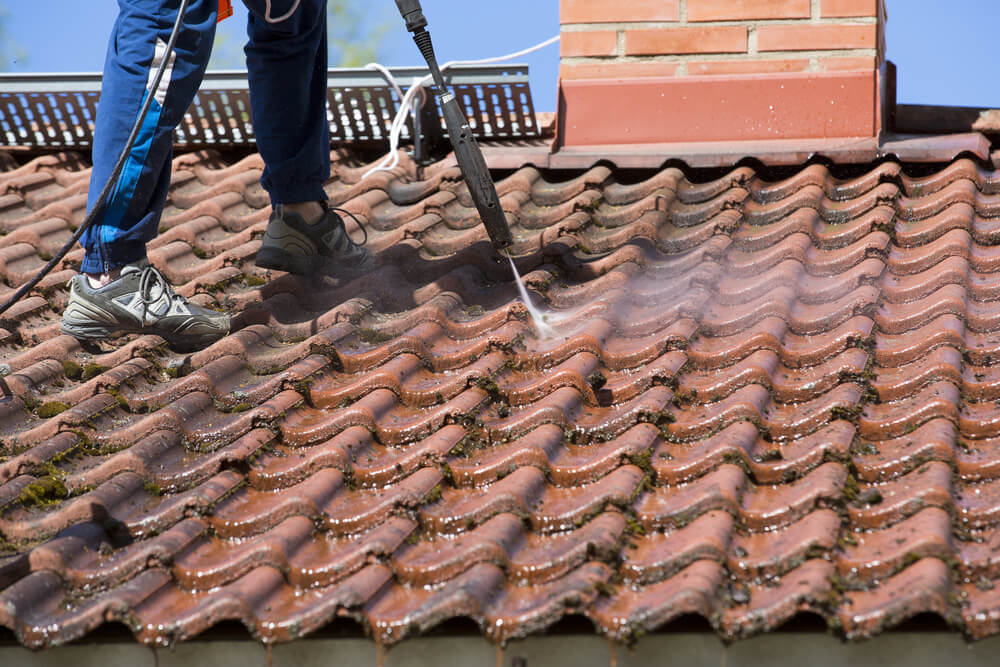The roof of a home is an important part of its structure that requires maintenance and upkeep. Cleaning the roof correctly can help prevent costly repairs in the future. This article will provide a step-by-step guide on how to clean your roof, from gathering materials to preventing future build-up.
Cleaning the roof of a home is not only necessary for aesthetic purposes but also for structural integrity. A dirty roof can cause water damage or create mold, leading to expensive repair bills down the line. Proper cleaning procedures should be followed in order to ensure that no damage is done during the process. This article will provide detailed instructions on how to safely and effectively clean your roof while avoiding any potential hazards along the way.
Gather the Necessary Materials
Gathering the necessary materials for cleaning a roof is a critical step in the process. It is important to ensure that you have all of the proper tools and supplies before beginning any project involving working on a roof. To start, it is recommended that necessary safety gear be gathered, such as gloves, protective eyewear and sturdy shoes with good traction.
Additionally, natural cleaners should be obtained prior to starting work on the roof. Common household products such as baking soda and white vinegar can work well for removing dirt and stains from shingles. It may also be beneficial to gather heavier-duty cleaners such as a power washer or pressure cleaner for tougher jobs.
A long-handled scrub brush will help reach hard to access areas such as gutters or eaves troughs where debris may have accumulated over time. Finally, having an extendable water hose at hand will allow you to efficiently clean large sections of your roof without having to move ladders frequently.
Being prepared ahead of time with all of the right materials will make your job easier and safer when cleaning your roof.
Prepare the Area
Before any cleaning can be done, it is important to prepare the area surrounding the roof. This includes safely accessing the roof and ensuring that there are no obstacles that may impede the cleaning process. It is also important to consider working in groups if possible, as this will help to distribute the workload evenly and prevent fatigue from setting in too quickly.
When accessing a roof, it is essential to take all necessary safety precautions. Using ladders or scaffolding that has been properly secured and inspected will ensure that everyone involved remains safe throughout the job. In addition, wearing protective clothing such as gloves, eye protection, and a face-mask are recommended for maximum safety while on the roof.
Working in teams or groups when performing an extensive roof clean can reduce fatigue significantly. Having multiple people participate in different roles helps to keep each individual motivated and energized throughout the task at hand. It also allows for tasks to be completed more efficiently due to increased manpower and coordination between team members.
Additionally, having extra hands available helps ensure that no one person has to carry too much of a burden while cleaning up large messes or debris from a roof’s surface.
Choose a Cleaning Method
When it comes to cleaning a roof, two primary methods are available: pressure washing and soft washing. Pressure washing involves using high-pressure water jets to strip away dirt, debris, and other contaminants from the roof’s surface.
Soft washing is a gentler method that uses low-pressure water spray combined with biodegradable cleaning solutions to remove dirt and grime while minimizing damage to the roof’s surface. Both methods can be effective but require careful consideration of the circumstances in order to determine which one is best for any given situation.
Pressure washing
Pressure washing is an effective cleaning method for removing dirt, debris, and other contaminants from a roof. A pressure washer works by pumping pressurized water at the surface to be cleaned. The powerful stream of water loosens debris and washes it away. It is important to note that in order to use a pressure washer safely, the user must be aware of the pressure gauge readings. Different surfaces require different pressure levels in order to avoid damage.
Additionally, safety tips should also be followed when operating a pressure washer. These include wearing protective gear such as eye goggles and long pants, setting up barriers around the area being washed to protect grass or landscaping from damage, and only using approved soaps or cleaners in accordance with manufacturer instructions. Pressure washing can help restore your roof’s appearance if done correctly and with proper safety precautions taken into account.
Soft washing
Soft washing is an alternative cleaning method to pressure washing that uses a combination of detergents and low-pressure water to effectively remove dirt, grime, mildew, mold, and other contaminants from a roof surface. It differs from traditional pressure washing in several ways:
- Softwashing does not require high pressure and therefore won’t damage the roof shingles or tiles.
- Softwashing is more effective at removing algae, mildew, and other organic growth than painting alone.
- Softwashing can be used to clean larger areas quickly and cost-effectively due to its use of low pressure water delivery systems which are less labor intensive than manual scrubbing or chemical treatments for smaller areas.
- Softwashing requires fewer chemicals than painting thus making it more environmentally friendly.
Overall, softwashing offers many advantages over traditional painting methods such as cost savings in time and money spent on labor as well as being more eco-friendly due to the reduced amount of chemicals used in the process.
Furthermore, softwashing can provide better results when it comes to removing organic growths from roof surfaces compared to painting alone which makes it an ideal choice for long term maintenance needs of roofs that experience frequent exposure to inclement weather conditions or other environmental factors that could cause discoloration or permanent staining over time if left untreated.
Clean the Roof
Gently scrubbing the roof with a brush will help remove dirt and debris. It is important to take safety precautions when cleaning a roof, such as wearing non-slip shoes, using ladders on even ground, and having someone spot you while working at heights. In addition to cleaning the roof itself, it is also necessary to clean gutters and downspouts to reduce water damage.
The type of cleaner used for soft washing should be appropriate for the material of the roof; asphalt shingles require a milder cleaner than tile roofs or metal roofs. Cleaners can come in many forms including detergents, bleaches, acids and alkalis depending on what needs to be removed from the surface of the roof.
It is essential that any leftover residue from cleaners is washed off thoroughly after use, as this can cause further soiling or staining on the surface of the roof over time. Once all dirt and debris has been removed via soft washing or gentle scrubbing with a brush, it may be beneficial to apply sealants afterwards in order to protect against future weather damage and wear.
| Benefits | Considerations |
| — | — |
| Safety Precautions | Appropriate Cleaners |
| Gutter & Downspout Cleaning | Residue Removal|
| Sealant Application| Weather Damage Protection | | Wear Prevention | Time & Cost of Application |
Prevent Future Build-up
Having cleaned the roof, it is important to also take preventative measures in order to ensure that build-up does not occur again.
This can be achieved by taking the following steps:
* Utilize a UV protection coating on your roof.
* Clean the gutters regularly of any debris or dirt.
* Remove algae and lichens as soon as possible with a mixture of water and bleach.
* Install ventilation systems and ridge capping to help reduce humidity buildup.
* Invest in regular maintenance procedures such as pressure washing or moss removal services.
UV protection coatings are particularly effective in preventing future build-up on roofs, as they block out ultraviolet rays from the sun which can break down shingles over time if left unprotected.
Algae prevention is also important, as this growth can cause issues with drainage flow from rainwater, leading to further damage and costly repairs if not taken care of quickly enough.
Regularly cleaning any debris or dirt from gutters will also help reduce the risk for future build-up by preventing clogs from forming that could lead to water damage on roofs or walls around the house.
Ventilation systems and ridge capping also work wonders in reducing humidity levels within attic spaces, while investing into regular maintenance procedures such as pressure washing or moss removal services will keep roofs looking great for years to come.
Conclusion
At the conclusion of the cleaning process, it is essential to inspect the roof for any additional dirt or debris that may have been missed.
Utilizing a binocular can aid in providing an accurate analysis of the roof surface and make sure that all areas were properly cleaned.
Finally, preventive measures should be taken to ensure that future build-up is minimized.
This includes proper maintenance and regularly scheduled cleanings on an annual basis.
By utilizing these techniques, homeowners can rest assured knowing that their roofs will remain in optimal condition throughout its lifespan.
Metaphorically speaking, this approach is akin to regular checkups with a doctor – the better care you give your roof now, the healthier it will remain down the road.




